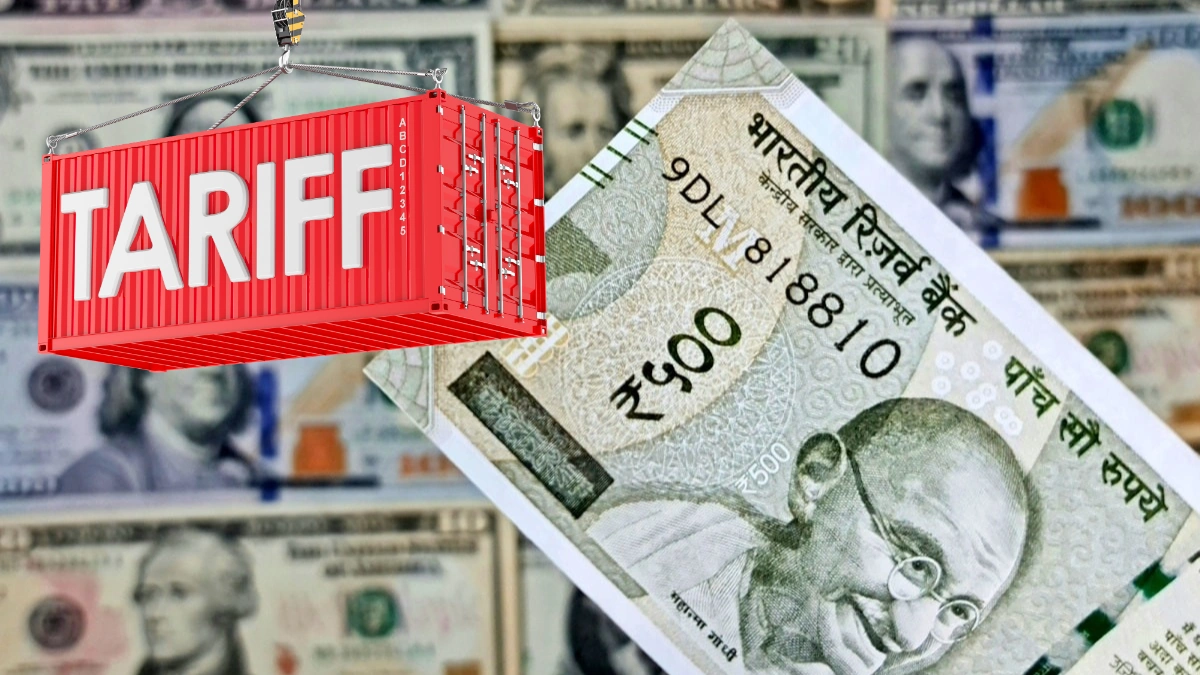
The US President Donald Trump’s planned 25% additional tariff on Indian imports, which would go into effect on August 27, caused market fears to be ignored as the Indian rupee opened higher on Monday.
Early gains in the Indian rupee were accompanied by optimism that the conflict between Russia and Ukraine would be coming to an end. The US-Russia discussions on August 15 are the focus of investors’ hopes since they may lead to a reversal of some of the announced tariff measures and an easement of trade tensions.
Market Opening and Currency Movement

Compared to Friday’s finish of ₹87.66, the Indian rupee started the session 13 paise stronger at ₹87.53 per US dollar. A narrow intraday range between ₹87.25 and ₹87.80 was predicted by analysts, with trading momentum probably impacted by impending local and international economic data.
Market forecasts for Monday’s start had already suggested modest rises, with an opening price of ₹87.51. Inflation reports from the US and India are now the focus of attention since they should provide currency developments a clearer path.
Trump Administration Threatens Harvard’s Control Over Patents Amid Escalating Tensions
Key Data Releases This Week

Two crucial domestic inflation readings are on the calendar:
- Consumer Price Index (CPI) – August 12
- Wholesale Price Index (WPI) – August 14
These numbers will assist in assessing economic pricing pressures and directing the Reserve Bank of India’s future monetary policy approach. Inflation results will also affect the Indian rupee by influencing foreign capital flows and interest rate expectations.
India–US Trade Talks: Concessions, US Cotton, and Concerns Ahead of Key Negotiations
Potential Impact of US Tariffs on India

In the short term, India’s commerce and currency are anticipated to be significantly impacted if the proposed US tariffs are implemented. Economists warn that these actions could:
- Cut export revenues
- Increase the trade deficit
- Trigger capital outflows
- Push inflation higher through imported goods
Exports of textiles, leather goods, and seafood—which make up a sizable amount of India’s shipments to the US—are especially at risk.
The government of India has referred to the action as “unfair and unreasonable,” pointing out that despite the fact that all three countries have been purchasing oil from Russia, the US is singled out India with the highest tariff rate—50% on some products—while China and Turkey only pay 30% and 15%, respectively.
According to economists, if these 50% taxes are maintained for a long time, India’s GDP may decline by 0.5%, which would be a significant hindrance to overall growth.
Indian Stock Markets on Edge as Tariff Concerns Intensify Trade Uncertainty
Oil Prices and Geopolitical Influence

The outlook for currencies was further complicated by the world’s oil markets. Monday morning’s Asian trading saw Brent crude prices drop to $66.25 per barrel, following the sharp drops from the previous week. Investor anticipation that the forthcoming US-Russian negotiations will reduce geopolitical tensions around Ukraine and possibly stabilise international trade and energy markets are contributing to this decline.
In general, lower oil prices help India by lowering import costs and lowering inflation. The benefits of cheaper crude, however, might be outweighed by losses in export earnings if US tariffs are implemented.
China’s Economic Signals and Market Sentiment

China’s July inflation and growth numbers were lower than anticipated, suggesting a gradual rebound in the world’s second-largest economy, which further contributed to the mixed global picture. As a result, expectations for oil demand have remained low, which has tempered optimism in the commodities market.
India may see a decline in demand for some exports as a result of China’s slower growth, but manufacturers may benefit from lower raw material costs.
OpenAI Launches GPT-5: India Positioned as Key Market in Global AI Push
Indian Equity Trends: FIIs vs. DIIs

Foreign Institutional Investors (FIIs) continued to withdraw funds from the equities markets last week, indicating a continued hesitancy towards emerging economies in the face of global unpredictability. FIIs have remained on the defensive due to trade concerns and shifting interest rate forecasts.
Conversely, vigorous purchases by Domestic Institutional Investors (DIIs) have helped to mitigate market losses. In the upcoming weeks, this equilibrium between domestic purchasing and overseas selling is probably going to continue to be a key component of market performance.
Short-Term Outlook for the Rupee

The rupee’s early rise indicates that before to the tariff deadline of August 27, investors are still placing bets on a diplomatic solution. If the negotiations on August 15 are successful, the currency might gain more strength; if tensions are not resolved, selling pressure might return.
Short-term changes in currency will depend on:
- Domestic and US inflation figures
- Brent crude price trends
- Capital flow patterns
- Developments in trade negotiations
India’s Likely Policy Approach

Analysts expect India to adopt a dual strategy to address the tariff challenge:
- Diplomatic Engagement – Increasing talks with Washington to postpone implementation or request tariff relief.
- Market Diversification – Increasing trade with Africa, the EU, and Southeast Asia to lessen reliance on US markets.
Government support packages for impacted industries, including tax breaks, export incentives, and credit facilities for small exporters, could be announced concurrently.
Conclusion
The Indian rupee’s strong start to the week is indicative of both resilience in sentiment within the local market and confidence around potential geopolitical breakthroughs. The looming threat of US tariffs, however, casts doubt on the future.
If negotiations are successful and inflation remains within reasonable bounds, India may be able to weather the current turmoil with little to no disruption. To preserve GDP, jobs, and currency stability, exporters and policymakers will have to strike a difficult balance if tariffs are implemented at the suggested level.
